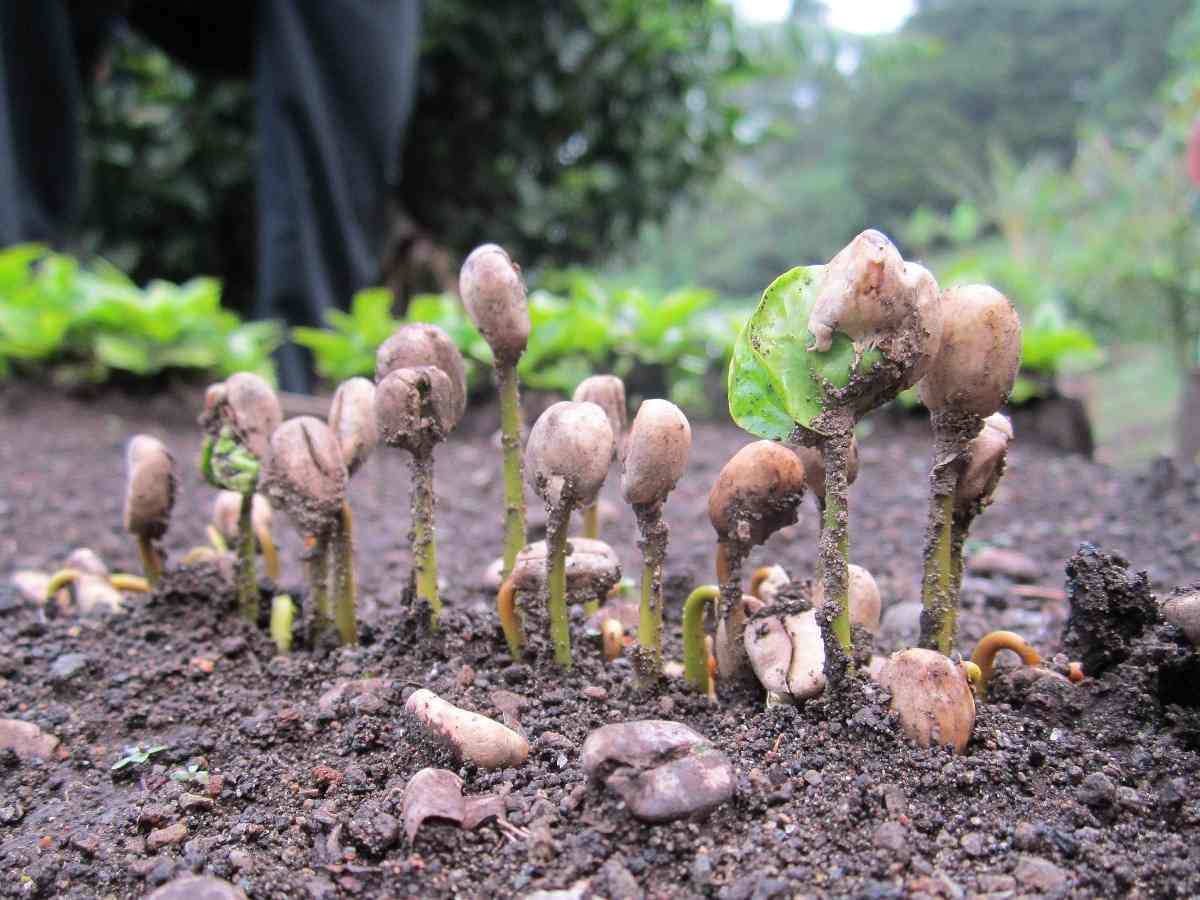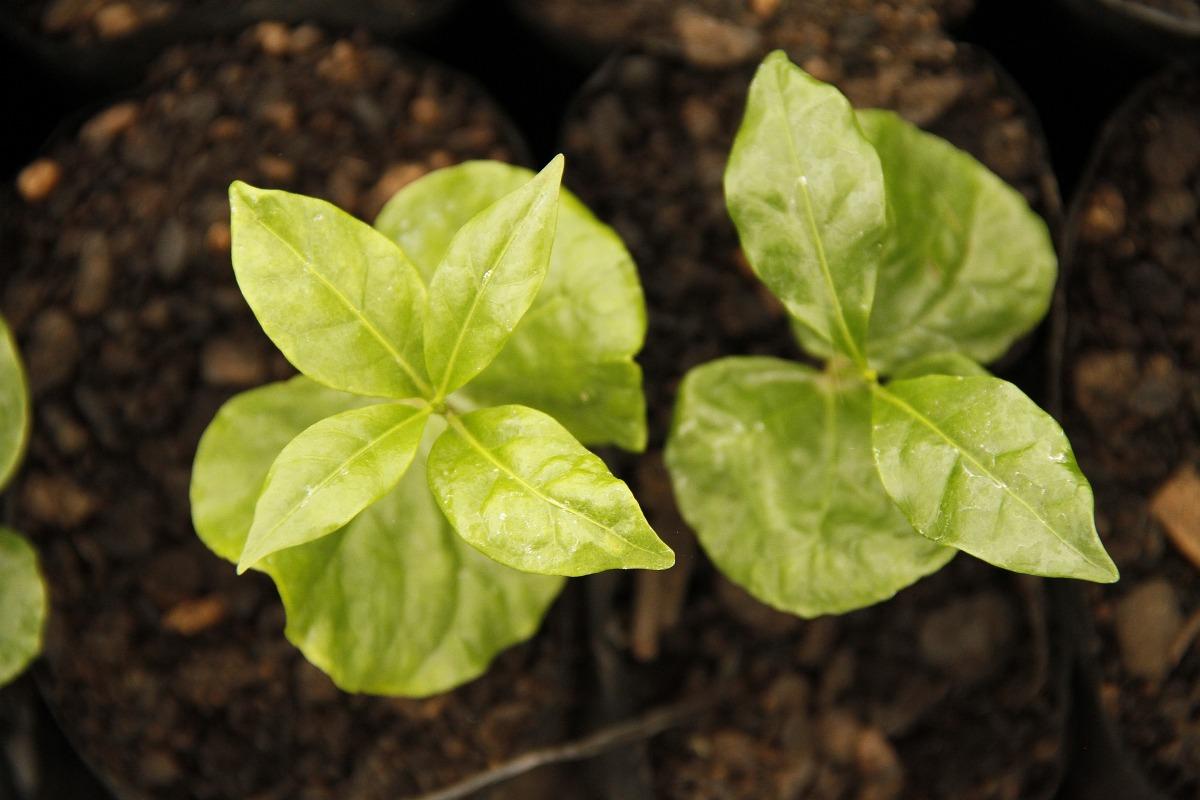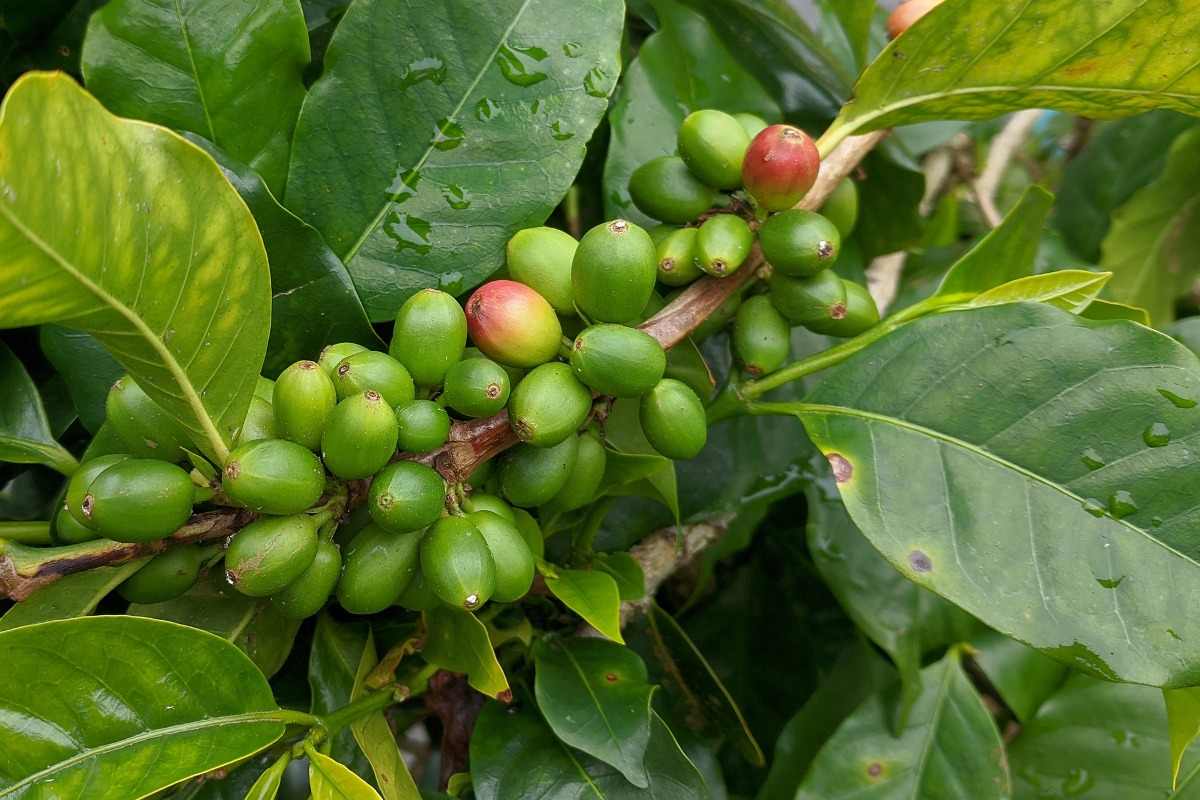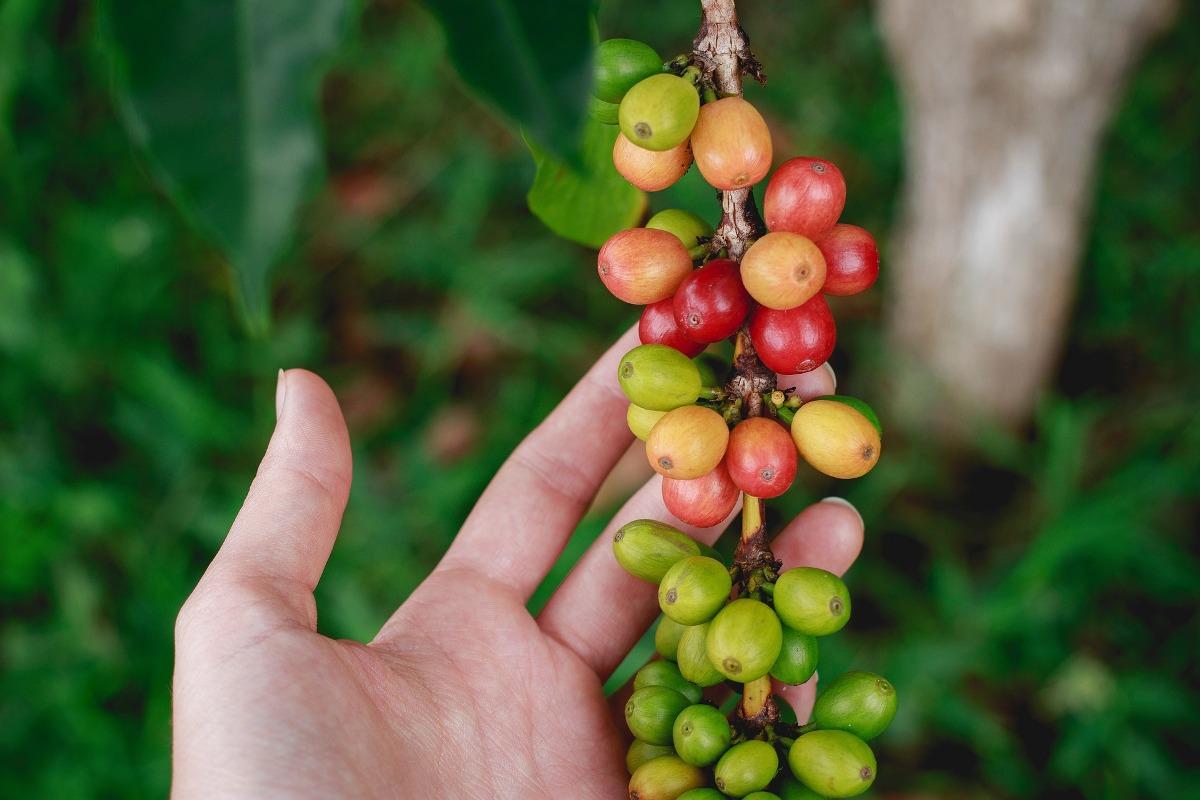Introduction to Coffee seed germination
Coffee is a member of the family Rubiaceae and the genus Coffea. Coffee production, cultivation of the coffee plant, generally done in large commercial operations. Coffee propagation is mainly performed by seeding. Though, germination in the coffee seed is slow and uneven. The production of plants in the field is affected by environmental factors, which retards the germination rates and, the number of plants obtained. Plant tissue culture provides the possibility of applying different growing conditions, to induce a response to shorten zygotic embryo germination times.
A step by step guide to Coffee seed germination procedure

The coffee fruit is a drupe containing mainly two seeds. The seed is comprised of endosperm, embryo, and spermoderm or “silver skin”. The seed is comprised of endosperm, embryo, and spermoderm or “silver skin”. The germination process begins with the water uptake by the seed and ends with the elongation of the embryonic axis, generally the radicle. So, the end of the germination process in coffee seeds corresponds with protrusion of the radicle through the endosperm. For radicle protrusion to occur the expansion force or “thrust” of the embryo should exceed the mechanical restraint of the surrounding layers of tissue, i.e. endosperm and seed coat.
Conditions for Coffee seed germination
Seed coats were removed by hand and the seed surface was sterilized in about 1% of sodium hypochlorite for 2 minutes. Subsequently, Coffee seeds were rinsed in water and imbibed in demineralized water. Seeds were located in 94-mm Petri dishes on filter paper in 10 ml of water. At least 3 seeds were taken randomly every day during the germination process for light microscopy and low-temperature scanning electron microscopy studies.
The coffee plant is an attractive houseplant and is commonly grown from seed. Though, coffee beans take a long time to germinate. To speed up the germination process, soak the beans for 48 hours before sowing. After soaking, place the seeds on top of the planting medium but do not cover them as light facilitates seed germination. Then, keep the soil moist and at room temperature. If you want an easy way to keep the necessary moist environment, you can loosely cover the pot with a clear plastic shower cap. It will almost eliminate the need for watering while you are waiting for seed germination to occur. Germination may take as long as 6 to 8 weeks so be patient.
Once the coffee seeds have sprouted, give the seedlings very bright light, moderate humidity, and normal room temperatures. The plants will need a light fertilizer application every month. If you over-fertilize, plants are likely to develop brown leaf-tips. When well-grown, the plants will produce fragrant white flowers when they are about 3 years old. The berries, which resemble cherries, are ripe when the color changes from green to red color. Each will contain two coffee seeds within a parchment covering that is surrounded by a yellowish jelly-like pulp. These seeds can be planted or if you have a large crop, roasted and ground for a home-grown cup of coffee.
Sowing of Coffee seed
Pre-sowing seed treatment by Azospirillum and Phosphobacterium can be done. Seeds are sown in December – January in the bed 1.5 to 2.5 cm apart with the flat side downwards in regular rows. They are covered with a thin layer of fine soil and also a layer of paddy straw. Water the beds daily and then protect from direct sunlight by an overhead pandal. Then, seeds germinate in about 45 days after which they are transplanted to a secondary nursery bed for raising ball or Bag nursery.
Coffee seed germination time
In case if you miss this: Chilli Seed Germination, Time, Temperature, Procedure.

Coffee seed germination may take as long as 6 to 8 weeks.
Grow coffee from Coffee plant seeds
Ideally, to grow coffee bean plants, you must start with a freshly picked coffee cherry, but most of us don’t live in a coffee-producing country, so this is a bit problematic. If, you do happen to reside in a coffee-producing country, and then pick ripe coffee cherries by hand, pulp them, wash, and ferment in a container until the pulp flops off. After this, rewash, discarding any beans that float and then dry the beans on a mesh screen in open, dry air, but not direct sun. The beans must be slightly soft and moist inside and dry on the outside; bite into it to find out. Because most of us don’t live in a coffee-producing region, green coffee can be bought from a green coffee supplier. And make sure it is from a fresh, recent crop. Although the seed can be germinated for almost four months, surer results are had if fresh. You will probably want to plant many coffee seeds to get one plant; they’re kind of finicky. Fresh seeds germinate in about 2 ½ months while older seeds take about 6 months.
Coffee seed germination characteristics
Coffee seeds present two main challenges to growers; they take a long time to sprout, and they are prone to rotting. This is exacerbated by the fact that seeds grow inside a fruit. Any remnants of this fruit material, and even if you think it has been cleaned off, are an absolute magnet for bacteria and mold. So the first step is to remove the papery outer layer covering the Coffee seed. The innermost seed must be a very light color. Sometimes this layer will already be peeling off a little and make your best effort to remove it entirely.
Radicle protrusion in seeds under optimal conditions (30°C, in the dark) started around day 5 or 6 and at day 10 of imbibitions, 50% of the seed population displayed radicle protrusion. At day 15 of imbibitions, most of the Coffee seeds had shown radicle protrusion. Seed germination is faster under optimal conditions when environmental effects such as variation in day-night temperatures and soil water potential are absent. Also, seed germination under field conditions is defined as seedling emergence from the soil; radicle protrusion has already been completed sometime before seed emergence.
It is vital to make sure the seeds stay moist after germination for the leaves to emerge. If the seeds dry out, you can end up with a seed on a stem that never opens up. Even though you have a stem, the plant leaves can be entombed in the hard seed, never able to break out. You can spray the Coffee seeds themselves daily to make sure they remain moist and soft. Keeping the air normally humid will help with this. Also, experimented with covering each seed with a tiny piece of moist paper towel, and this worked. It may be beneficial to use a moist layer of whole spaghnum moss above the soil. This is another method to keep moisture in contact with the seeds after they’ve risen up and out of the soil. Any effort you can make to keep them soft will improve the chances of success.
Coffee seedlings are usually easy to grow. You can transplant coffee seedlings to individual cups or cells and keep them under a small light or in a sunny window. Coffee is a forgiving plant and it tolerates most indoor light conditions and does well at room temperature. The coffee plant prefers moderate water. But as long as you don’t let the soil get bone dry, it must not die. If you’re aiming to move coffee plants outside, make sure to wait until they are at least 6 to 12 inches and you must make sure to harden them off properly.
How to sprout Coffee seeds
Once you have your coffee seeds, soak them in water for 24 hours, drain, and then sow in damp sand or wet vermiculite, or put the seed between moist coffee sacks. After you germinate coffee seeds, remove them from the medium. Put the seed flat side down in a hole made in loam soil with a high humus content to which rotted manure, bone meal or dried blood can be added. You can try a lightweight, porous soil. Don’t press the soil down and place ½ inch of mulched grass atop to conserve moisture but remove it when the seed has germinated. Then, water seeds daily but not too much, just moist. Once your coffee seeds have germinated, the plant can either be left or transplanted in a porous, low pH level soil with high nitrogen content. Orchid fertilizer can be used sparingly on the coffee plant to maintain the low pH and add minerals. Place the plant indoors under artificial lighting and water once a week and allow to drain, and again during the week with fertilizer. Keep the soil moist and also well-drained.
It takes 2 to 3 years for the tree to flower and possible cherries to be produced. To encourage flowering, reduce watering at the start of winter for the successive 2 to 3 months. Once spring begins, water the Coffee plant well to shock it into bloom. Once the cherries mature, you can harvest, pulp, ferment, dry roast and finally enjoy a nice cup of drip. It takes some painstaking effort to mimic tropical high altitude conditions where coffee trees thrive, but well worth the effort, even if you don’t get the finest quality of your tree.
Germinating Coffee seeds
Once your Coffee seeds have sprouted, you want to let the taproots get to be about 1/4 inch before moving to the soil. Keep them in the rinsing cycle until this point. Then simply stick the Coffee seeds in the soil with the taproot facing down. The seed must be pushed about halfway into the soil with the other half sticking out. The taproot will be fully buried at this point and use a rich fertile soil. You can add 1/3 concentration of vermiculite to your soil for extra water retention. Coffee seeds germinate very slowly in the field. Seedling emergence from the soil starts about 50 to 60 days after sowing in the warmer periods of the year. When temperatures are lower the emergence period can increase to 90 days. Following seed germination, the coffee cotyledons grow by absorbing the endosperm and turn green. The first seed parts to emerge from the soil are the cotyledons, characterizing epigeal germination, and 3 to 4 weeks are necessary for the cotyledons to completely deplete the endosperm and be free from any residual endosperm.
Fresh seeds must germinate in 2.5 months, but old seeds can take as long as 6 months. Coffee in pergamino is even better and if this is available plant the coffee faces down in the pergamino. It is advisable to pre-germinate the seeds and soak the seeds in water for 24 hours. Then sow the Coffee seeds in damp sand or wet vermiculite in which the excess water has been drained. Otherwise, you can place the seeds between moist coffee sacks, which must be watered twice a day and drained well.
Once the coffee seed germinates, carefully remove it from the sand, vermiculite, or burlap bags. Make a hole about 1.25 cm deep in a friable loam soil with high humus content. Rotted manure, bone meal, and dried blood can be added. If this type of soil is not readily obtainable try a lightweight and porous soil. Put the seed flat side down in the hole and sprinkle soil over the hole. Do not press the soil down firmly. Placing a 1/2 inch of mulched grass on top will help preserve moisture, but must be removed when the seed has fully germinated. The seeds must be watered daily. Too much water or too little water will kill the Coffee seed. The soil must remain well-drained, but moist at all times.
After seed germination, the coffee plant should either be left alone or carefully removed and planted in a soil with a low pH (acidic) and high nitrogen content. The soil must be porous. So, course sand or basalt gravel dust can be added. Manure can be added. A fertilizer that is appropriate for orchids can be used sparingly for the coffee plant to maintain mineral levels and a low pH level.
Coffee plant care
You should not miss this: Sugarcane Seed Germination, Time, Temperature, Process.

Water the Coffee tree twice per week in what is called a full watering and a half watering. In a half watering, simply add water to the soil and allow it to drain. In a full watering, add water, allow it to drain, and add water with fertilizer and allow it to drain. The key is to maintain the soil moist, but well-drained.
After 2 or 3 years flowering and possibly cherries can be expected, but do not expect high-quality coffee unless you are at a high altitude and monitoring the conditions of the artificial microclimate carefully. To spur flowering, wait until the beginning of winter and significantly reduce watering for 2 to 3 months.
Commonly asked questions about Coffee seed germination and cultivation

How fast do coffee trees grow?
The tree will grow fruits after 3 to 5 years, producing for an average of 50 to 60 years, although up to 100 is possible.
What is the spacing of coffee?
Coffee is planted in rows 2 meters apart with plants 1.5 meters apart within the row.
How long does it take for a coffee tree to bear fruit?
Depending on the variety, it will take about 3 to 4 years for the newly planted coffee trees to bear fruit. The fruit is called the coffee cherry, turns a bright, deep red when it is ripe and ready to be harvested.
How much coffee can one tree produce?
The average coffee tree produces an annual yield of about 1 to 1 1/2 pounds of roasted coffee. It takes 4,000 hand-picked green coffee beans to make a pound of coffee.
How long do coffee trees live?
Coffee plants can live about 100 years old but are most productive between 7 to 20 years of age.
How many times a year is coffee harvested?
There is one major harvest per year, and it is labor-intensive. Specialty coffee is always hand-picked to ensure that ripe cherries are picked. Coffee pickers, make multiple passes every 8-10 days throughout the harvest season which can last 4 to 6 months.
Which type of soil is best for growing coffee?
The coffee plant can be grown on lots of soils but the ideal types are fertile volcanic red earth or deep sandy loam. For coffee trees to grow the soil should be well-draining which makes heavy clay or heavy sandy soils inadequate.
What are the major environmental problems with coffee production?
Some major environmental problems with coffee production are clearing of land, use of pesticides, pollution, deforestation, extinction of animals due to habitat destruction.
In case if you are interested in this: How to Make Money from Organic Farming Business.
Thanks for great teachings am happy for it,welcome to our place
can i get the document related to coffee nursery establishment and management in pdf